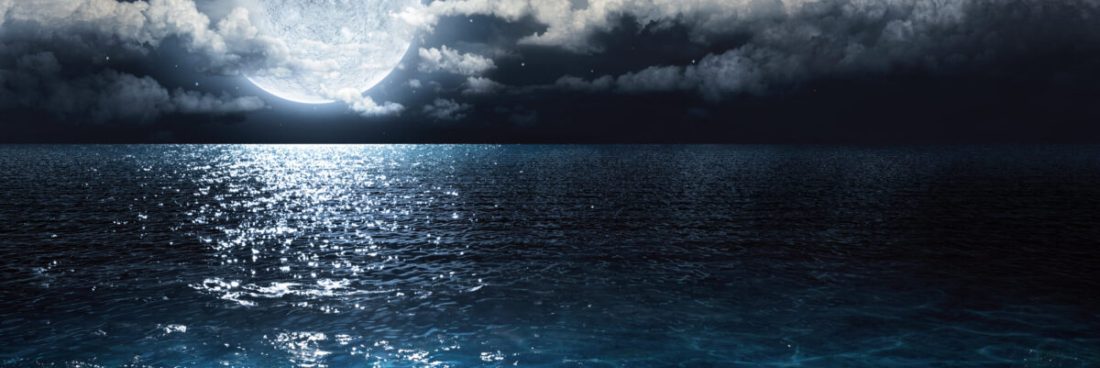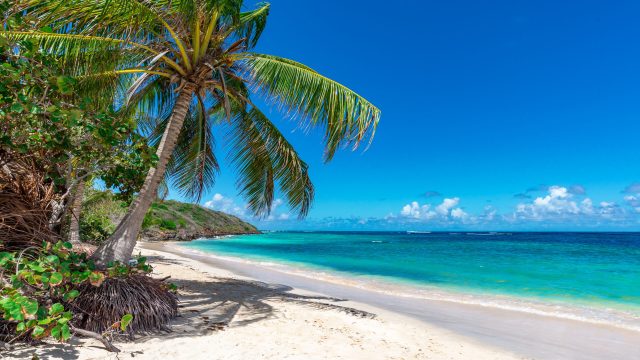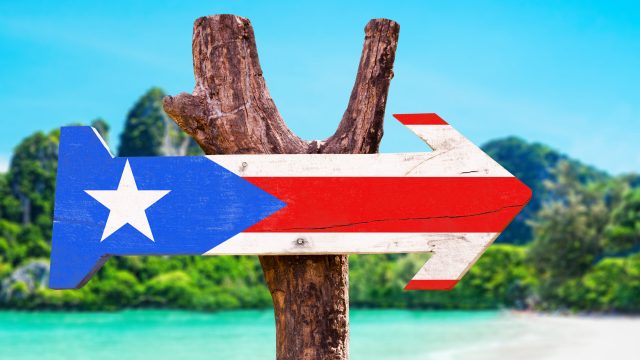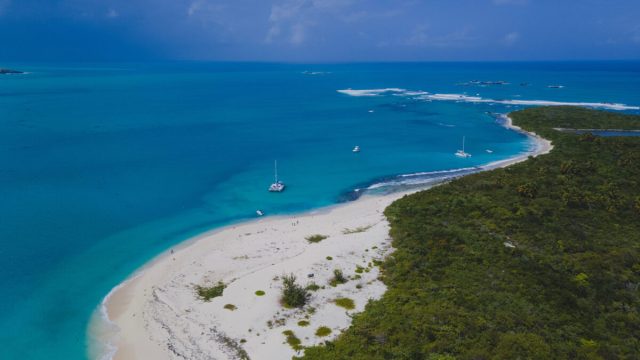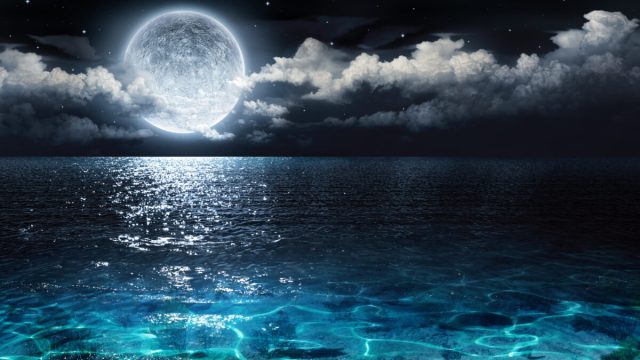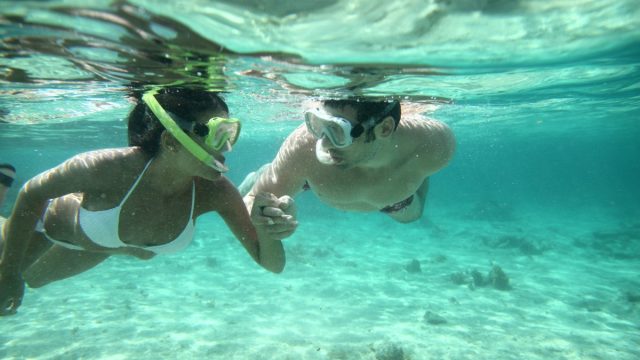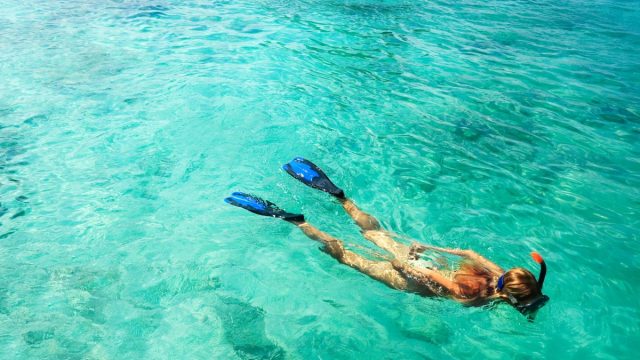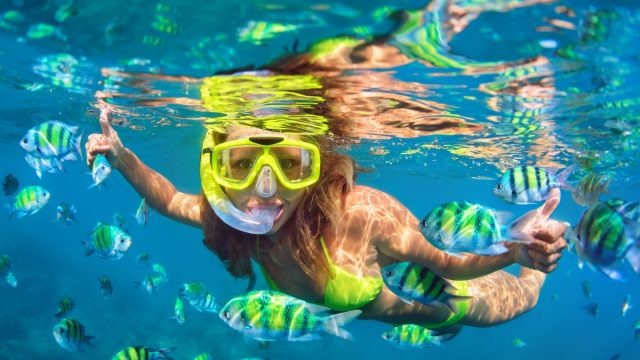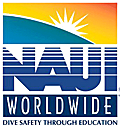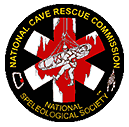Whether you’re looking for an experience with your family, a significant other, or a group of friends, nothing beats an island getaway full of activity and adventure. That’s exactly why Fajardo, Puerto Rico should be very high on your radar.
In Fajardo, there are so many exciting things to see or do. Visit historical sites like the Catedral Santiago Apóstol and the Reserva Natural de Las Cabezas de San Juan lighthouse to get a dose of Puerto Rican culture.
Then, spend the afternoon on the stunningly beautiful beaches that transform into natural light shows during the calm of the night. Imagine a sea full of fireflies to enchant you and whoever you are visiting Puerto Rico with.
When it comes to planning your next dream vacation, you will find plenty of things to do in Fajardo, Puerto Rico.
Where is Fajardo?
Fajardo is on the Eastern edge of the island of Puerto Rico, just slightly southeast of the island’s capital, San Juan. The region encompasses the city of Fajardo itself as well as the Puerto del Rey Marina and the Cabezas de San Juan Nature Reserve, home to the bioluminescent Laguna Grande.
The area is well known for all kinds of water sports, and the horizon is frequently dotted with sailboats, kite-surfers, and dolphins splashing around in the pristine waters. The waters off the coast are dotted with tiny islands that make up a part of the Cayos de la Cordillera Nature Reserve, a beautiful spot to observe wildlife either from the dock of a boat, snorkeling, or scuba diving.
What is a Bioluminescent Bay?
So, what is a bioluminescent bay, anyway?
Imagine looking at the dark night sky completely covered in bright stars. Now imagine it in the water. Puerto Rico’s Fajardo bioluminescent bay glows brightly at night thanks to the microorganisms that live in the water.
The rare ecosystem is composed of single-celled organisms called dinoflagellates — otherwise known as dinos — that grow together to produce an illuminating effect when there is movement in the water. While these tiny organisms exist throughout the oceans, it is very rare to find them in such high quantities in still water like Fajardo’s bay.
These little guys sit still all day just to wow you with flashes of light when you venture into the bay at night. Fish swimming through the water provoke streaks of light, just like your hand will when you wave it through the balmy waters.
5 Reasons to Visit Fajardo’s Bioluminescent Bay
So besides being super cool and extremely beautiful, there are a few really good reasons you should visit Fajardo’s bioluminescent bay.
Fajardo is extremely easy to travel to, and the bioluminescent bay is actually more of a lagoon that is unique to this part of Puerto Rico. Fajardo’s bioluminescent bay is one of the most popular on the island, hosting marine life. Plus, the town is adorable! So there’s plenty to do during the day, as well.
Here are the top reasons you need to visit the bioluminescent bay in Fajardo:
You Don’t Need a Passport If You’re an American Citizen
Puerto Rican politics aside, the good news is if you’re an American citizen, you can travel to the island without a passport. If this is your first family vacation with little ones, go ahead and enjoy the Caribbean without the added cost and stress of passport photos and applications.
Puerto Rico depends heavily on tourism so you’ll also be giving the island a welcome boost as you enjoy the phenomenal natural landscapes the island hosts. Conveniently, there are four local airports that are just a few miles away from Fajardo, so getting there couldn’t be easier.
It’s a Rare and Beautiful Sight
Fajardo’s bioluminescent bay is more commonly known as Laguna Grande. One of three bioluminescent bays in Puerto Rico, this rare, beautiful sight is not technically a bay. There is actually a narrow canal leading to the “glow-in-the-dark” watery lagoon.
The lagoon itself is tucked into a small peninsula, surrounded by gorgeous beaches like the Seven Seas Beach, or the pristine La Matita. This lagoon is special because of the three on the island, it still hosts a dense quantity of microorganisms that give it its glow. The other bays on the island have been damaged from climate change and excessive tourism.
However, Fajardo’s bioluminescent bay remains protected since it lies within the peninsula and remains fairly insulated.
It’s the Most Popular One on the Main Island
Fajardo’s Laguna Grande bioluminescent bay is one of the most popular to visit on the island due to its proximity to San Juan, the island’s capital. While popularity may conjure up images of crowded beaches and long lines, that is far from the case in Fajardo.
In Fajardo, popularity means vida! As a popular tourist destination, the area is friendly to non-native Spanish speakers, and there are plenty of information centers to keep you in the know when it comes to the best days and times to visit the lagoon, how to get there, and then, where to eat of course!
You Will Likely See Marine Life
Besides the ‘dinos’ that will be lighting your experience of the Fajardo bioluminescent bay, chances are you will see some other marine life as well. Puerto Rico is home to a variety of sea creatures, including sea turtles and stingrays that can hide beneath the surface of the underwater sand.
During the day you are sure to see some playful dolphins along the coastlines. And when kayaking through the bioluminescent waters, keep your eyes peeled for motion on the seabed. The Laguna Grande is home to a variety of colorful, tropical fish! Look out for the bright blue Atlantic Blue Tang or the rainbow hued Stoplight Parrotfish.
Fajardo is a Beautiful Town
Besides being an excellent point of departure for aquatic adventures to the east of Puerto Rico, Fajardo itself is a beautiful town. Just 40 minutes away from the San Juan airport, the town is well known for its amazing seaside views and nature reserves.
The region is made up of nine barrios or neighborhoods, and has some notable landmarks including the Las Cabezas de San Juan lighthouse, one of the oldest on the island. This lighthouse still operates to protect the coastline of the island on the Eastern side.
Another cultural site is the Plaza Pública. One of the more modern plazas or town squares in Puerto Rico, it still maintains its old charm. An example is that despite the seemingly old world architecture, the entire square offers free wi-fi to visitors. What better way to enjoy a beautiful old-style square while planning your next excursion?
And of course, there is the Parroquia Santiago Apóstol. Dating from as far back as 1776, the church has been included in the National Registry of Historic Locations since 1984.
Tips to Make the Most Out of Your Trip to the Bioluminescent Bay
Now that you’re convinced it’s time to go check out the Fajardo bioluminescent bay, let’s look at some practical tips for your visit.
Bring Mosquito Repellent Spray
Puerto Rico is a tropical island, meaning there are tropical beasts abound and they won’t go easy on you. And if you’re going to be on the water, you’re putting yourself even more at risk. Mosquitos love warm bodies of water, and Laguna Grande fits that bill.
Be sure to apply mosquito repellant to all areas of skin that may be exposed, and keep some handy in case you get wet (which you probably will!) in the bioluminescent bay.
Be Aware That It’s a Workout
Getting to Laguna Grande is a workout. To get to the bay, you’ll have to row for about 20 to 30 minutes through mangroves. Given the unique geographical location of the lagoon, there is no quick way to get there without getting in a kayak and working up a sweat.
It’s totally worth it though. There is nothing like kayaking at night, and you’ll get a rush when you begin to see the lights in the water as you paddle close to the lagoon. And don’t forget you’ll have to paddle your way back out, as well.
Know That You Will Get Wet
When you visit the Fajardo bioluminescent bay, you will get wet! As we’ve mentioned, getting to the lagoon will take about 30 minutes of kayaking through beautiful mangroves, which is nowhere near similar to a boat or a drive to the beach.
Given the way the lagoon is entrenched within the island, going through the canal is really the only way to enjoy the experience. And if you’ve never been in a kayak, prepare yourself. The paddling motions will have you splashing around, so be sure to dress appropriately and don’t book a fancy dinner for just after your tour. We also suggest you wear long sleeves for additional protection from insects or brush that could irritate your skin.
Can I Visit the Bay Without a Tour?
Theoretically, yes, you can visit the Fajardo bioluminescent bay on your own. However, even local Puerto Ricans prefer to go with a guide. There are a few reasons why.
The Department of Natural Resources and Environment monitors the lagoon very closely. Given the sensitive nature of the dinoflagellates, especially following Hurricane Maria in 2017, the lagoon is under close scrutiny and tour companies operating in the area have strict licenses to ensure they comply with environmental protection policy.
Besides, going out on the water in an unfamiliar place can be very dangerous. Tour companies in the area have assigned medics and are familiar with local authorities should anything go wrong.
We suggest you work with a local organization to get the most out of your visit. For example, our team here at Pure Adventure offers a variety of options, including:
Can You Swim in a Bioluminescent Bay?
Swimming is prohibited in the lagoon. While years ago it was allowed, local authorities have since made swimming prohibited. Many of the sunscreens and deodorants that people wear pollute the water and damage the local aquatic life.
But there is great swimming along the coastline! Check out the Seven Seas Beach, famous for its beautiful aquamarine tones.
What’s the Best Time of Year to Visit Fajardo?
Fajardo’s bioluminescent bay is beautiful all year round, and tends to maintain light no matter when you go. However, the best time to visit is definitely in the dry season, so from December to mid-April. During the rainy season, heavy rains can disturb the water and dilute the glow that you might normally see.
During the dry season, you’ll enjoy pristine weather and get to see the lagoon at its brightest. The flipside is that there will be many other visitors to the area, so be sure to book any tours well in advance.
Be sure to avoid Fajardo in mid-March, the peak season for families and college students taking advantage of Spring break. February and April are probably when the crowds will be less dense.
Planning ahead is always helpful, especially when you work with a team like Pure Adventure. We’re proud to offer all kinds of unique experiences for people looking to visit Fajardo, as well as other areas in Puerto Rico.
Contact our team now to book time for your bio bay adventure tour!

